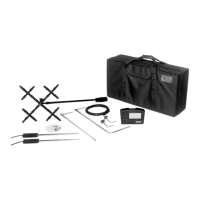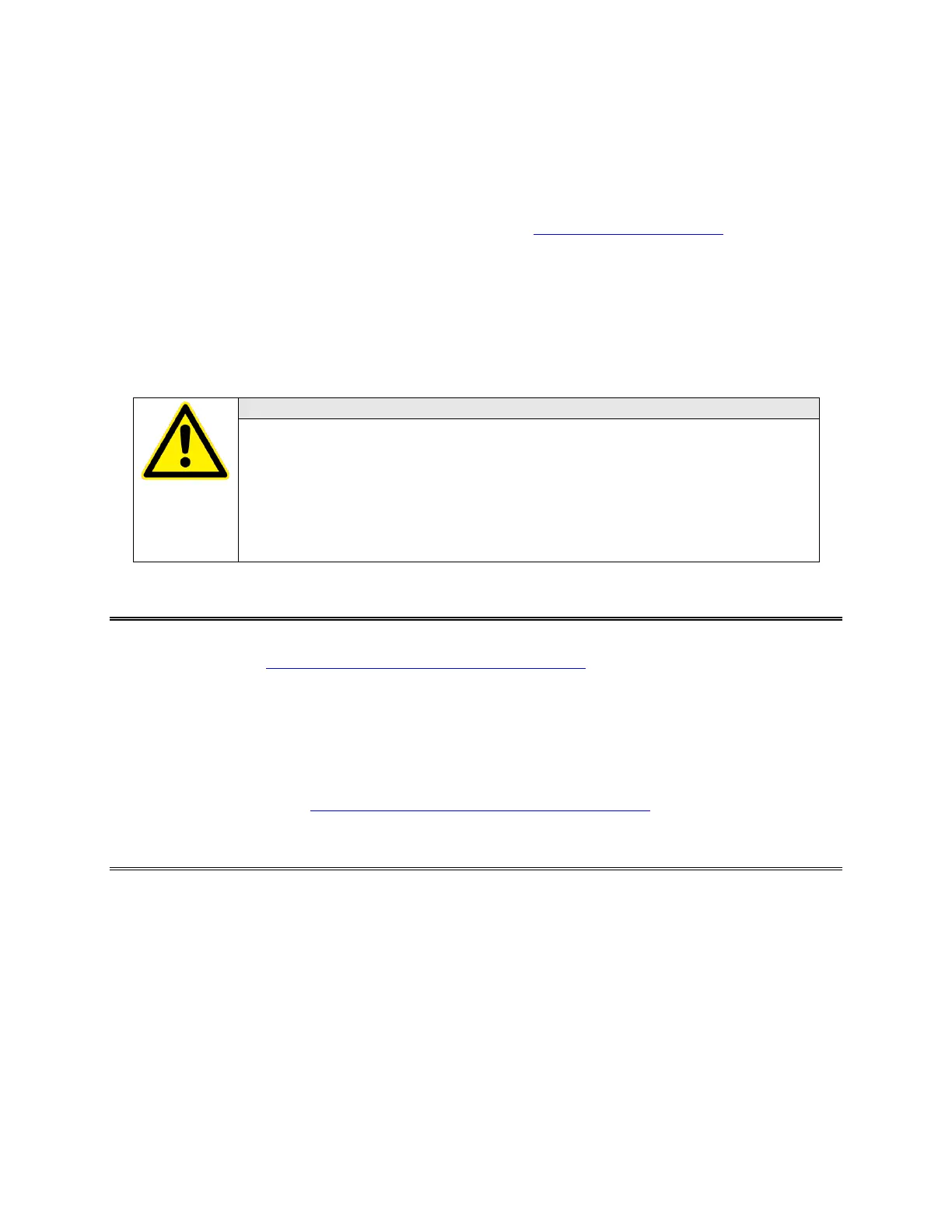43
Chapter 6. Flow Measurements Using the Capture
Hood
There are two methods of making flow measurements using the capture hood: Non-Backpressure
Compensated and Backpressure Compensated methods (see “Appendix A. Back Pressure
,” for an
explanation of the implications of capture hood-induced back pressure on the measured flow). Flows in
both “Supply” and “Return” flow direction can be taken with either non-backpressure compensated or
backpressure compensated mode.
Note: “Return” flows will be indicated by a negative flow number, as long as the tubes leading to the
Matrix manifold in the base are connected properly. The proper tube orientation is from the
upper portion of the Matrix manifold leading to the positive “+” port on the back of the meter.
CAUTION
WHILE USING THE BALOMETER
AIR BALANCING INSTRUMENT TO TEST AIR
FLOW IN DUCTS
, YOU MAY COME INTO CONTACT WITH OR BE EXPOSED TO
DUST
, POLLEN, MOLD, FUNGUS, OR OTHER AIRBORNE CONTAMINANTS. IF YOU
ARE OR MAY BE SENSITIVE TO DUST
, POLLEN, MOLD, FUNGUS, OR OTHER
AIRBORNE CONTAMINANTS
, ALWAYS USE AN APPROPRIATE MASK OR
RESPIRATOR WHILE EMPLOYING THE
BALOMETER
®
AIR BALANCING
INSTRUMENT
Non-Backpressure Compensated Measurements
To take non-backpressure compensated measurements, be sure the Back Pressure Compensation function
is turned “OFF” (see “Turn Back Pressure Compensation On and Off
” in Chapter 4).
Non-backpressure compensated measurements can only be made with the back pressure flap in the
“OPEN” position. If you attempt to make a non-backpressure compensated measurement with the flap
closed or partially closed, the meter will display the message “OPEN the FLAP”.
In the non-backpressure compensated mode, it is possible to take either single measurements or running
average measurements (see “Set Display Mode for Running Average or Single
” in Chapter 4).
Single Measurements
“Single” measurements are individual flow measurements initiated by pressing either the “READ” button
on the meter, or the red trigger button on the left side of the base. Depending on the flow being measured,
a single reading will take from one to eight seconds to complete (lower flows take longer).
Note: Keep the hood in place during the entire measurement, otherwise the reading will be in error.

